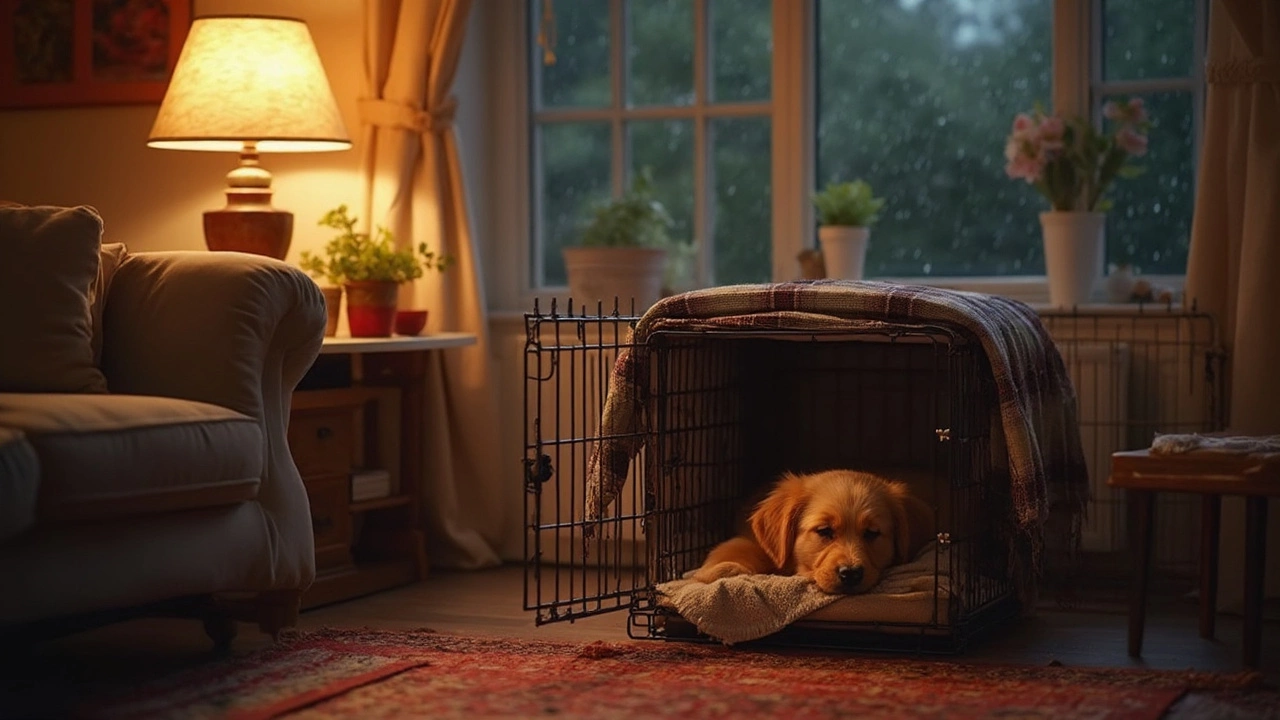Puppy Crate Guide: Pick, Train, and Sleep Happy
If you’re a new puppy parent, a crate feels like a big decision. It can be a comfy den, a training tool, and a safe spot when you’re not home. Getting it right saves you stress, protects your pup, and keeps your house tidy.
How to Choose the Right Puppy Crate
Start with size. Your puppy should stand, turn, and lie flat with a little room to stretch. A good rule is to add 2‑3 inches to their adult height. Too big and they’ll use one corner as a bathroom; too small and they’ll feel cramped.
Material matters too. Metal crates are sturdy and airy, perfect for puppies who like to chew. Plastic crates are lightweight and travel‑friendly, but make sure there’s ventilation. If you prefer a softer look, a fabric crate works for short stays but isn’t the best for chew‑heavy pups.
Look for a crate with a secure latch and a removable tray. A removable floor makes cleaning up accidents fast – a must when you’re teaching bathroom habits.
Nighttime Crate Tips & Pee Pad Decision
Most puppies can hold it through the night by the time they’re 12‑16 weeks old. Before adding a pee pad, try a schedule: take them out right before bed, after meals, and after play. If they’re still waking wet, a thin, absorbent pad can prevent a soggy floor while you work on the schedule.
When you do use a pad, place it in the back corner, not the whole floor. This teaches the puppy the pad is a bathroom spot, not a sleeping area. Pull the pad out once the pup consistently makes it to the door on their own.
Location of the crate matters. Put it in a low‑traffic area where the puppy feels safe but can hear you. A night‑light nearby can calm nervous pups and help you see if they’re moving around.
Introduce the crate slowly. Toss a treat inside, let them explore, and reward calm behavior. Keep the door open at first; let them hop in and out. When they’re relaxed, close the door for short periods while you’re in the room, then gradually increase the time.
Never use the crate as punishment. If a puppy associates the crate with fear, training will stall. Keep experiences positive – a favorite toy, a soothing blanket, or a gentle voice can turn the crate into a happy hideaway.
If accidents happen, clean the area with an enzymatic cleaner. This removes scent cues that might encourage the pup to repeat the mistake. A clean crate also makes it easier to spot new accidents quickly.
Watch for signs of distress: excessive barking, pacing, or trying to escape. A few whines are normal, but constant crying means the crate may be too big, too small, or placed in a noisy spot. Adjust as needed.
Finally, remember that consistency is key. Stick to the same bedtime routine, same exit schedule, and the same crate rules every night. Your puppy will catch on faster than you think.
Should I Cover My Puppies' Crate at Night? Real Answers for New Owners
Debating whether to cover your puppy’s crate at night? Discover the real reasons some owners (and puppies) rest easier with a cover and why it’s not a must for every pup. This article explains the science, perks, and practical tips behind crate covers. If you've googled late at night about whining pups or restless sleep, you’re in the right place. Get straight talk, not just generic advice.
